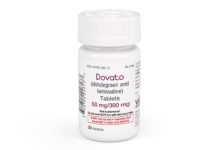The report published today focuses on the status of current, emerging and potential technologies in TB diagnosis. Many countries still rely on tools such as sputum-smear microscopy but new diagnostics are slowly changing the TB diagnostics landscape.
Tuberculosis (TB) continues to be a major public health threat despite being a curable disease. Latest figures from the World Health Organization (WHO), in 2015, indicate an estimated 10.4 million people had TB, and 1.8 million people died (1.4 million HIV negative and 400,000 HIV positive). Of further concern is that 480,000 cases of multidrug-resistant (MDR) TB* and a further 100,000 that were estimated to be rifampicin-resistant (RR) TB have occurred in the same period. Of those eligible for MDR TB treatment, only 125,000 people (20 per cent) were enrolled in treatment programmes.
Both the Sustainable Development Goals and the WHO End TB strategy aim to end TB. To achieve this global goal, the rapid and accurate diagnosis of both active TB disease and latent TB infection is critical for the timely initiation of treatment and, ultimately, control of the disease. Of the 10.4 million people who developed TB in 2015, 4.3 million cases were not diagnosed or notified and only one quarter of RR/MDR TB cases (132,000) were detected and reported. The underdiagnosis and underreporting of TB may be due to limited or delayed access to appropriate diagnosis and care, large private sectors not reporting cases, and the lack of access to appropriate diagnostic tools due to geographic and/or financial barriers.
The report published today focuses on the status of current, emerging and potential technologies in TB diagnosis. Many countries still rely on tools such as sputum-smear microscopy but new diagnostics are slowly changing the TB diagnostics landscape. Since our last publication, the WHO has made policy guidance statements for five new or improved TB diagnostic products. Further changes are expected, with unmet needs identified and articulated in target product profiles, and a technology pipeline promising new products to address these needs. Several of these are currently undergoing evaluation in field studies. This edition of the Unitaid Tuberculosis Diagnostics Technology Landscape report is intended to complement earlier reports, and presents a comprehensive overview of TB diagnostic technologies that are commercially available or close to market.
*TB strains that are resistant to rifampin (RIF) and isoniazid (INH).
Read the full report:


 ПОИСК ПО САЙТУ
ПОИСК ПО САЙТУ  поиск по ресурсному центру
поиск по ресурсному центру 



